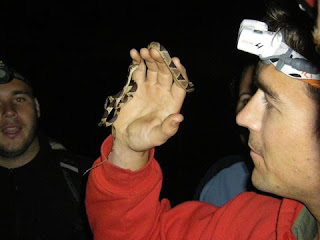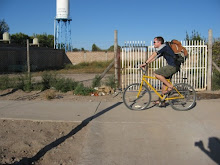 Cusuco National Park, and the tropics in general, are home to an incredible diversity of plants and wildlife. The year-round heat and humidity, combined with intense seasonal bursts of rainfall, create the perfect recipe from which life can flourish. Some species are ubiquitous throughout the region, but many are so specialized in their habitats that they are found nowhere else on earth. Cusuco alone has several of these species, including at least one type of tree along with several frogs that exist only within the park's boundaries.
Cusuco National Park, and the tropics in general, are home to an incredible diversity of plants and wildlife. The year-round heat and humidity, combined with intense seasonal bursts of rainfall, create the perfect recipe from which life can flourish. Some species are ubiquitous throughout the region, but many are so specialized in their habitats that they are found nowhere else on earth. Cusuco alone has several of these species, including at least one type of tree along with several frogs that exist only within the park's boundaries.In my short time here I have already seen an amazing variety of snakes. One kind, a parrot snake, is bright green and climbs effortlessly in a vertical motion through the branches of the forest. Another snake looks identical to the highly venomous coral snake found here, but is only colored this way as a mimic to fool predators. A third snake, a blond something or other (insert blond joke here), is so strong that it can extend a third of its body length straight out from a branch without bending. And one of my more recent snake encounters was with one that actually eats scorpions.

In addition to the snakes here, I have also seen some interesting insects and arachnids. The other day someone found a small tarantula, and I've also seen some other large spiders a little closer than I'd like, with one in the bathroom and one above my tent.
As for insects, I have frequent battles with small ants that make their way into my tent, and less confrontational encounters with large beetles, some dung, some scarub, that are often colored bright green and/or make strange clicking noises, audible if you hold the beetle up to your ear. In addition to these little guys, I have also witnessed a beautiful variety of butterflies, as well as a vicious looking, three-inch-long dobson fly complete with jaws and beady eyes.
And we can't leave out the birds. Someone caught an amazing hummingbird with an irridescent purple throat. There have also been reports of quetzals in the area, which I unfortunately have yet to see (and photograph), but if you do a quick Google Image search for 'quetzal', you'll see what I mean.

Cool, huh? Now the bad news- many of these amazing species, both here and around the world, are going extinct. Not just declining, but disappearing completely, meaning we will never see them again. Ever. How does this happen? There are a lot of factors, but the single most deadly culprit of species loss is habitat destruction. We're always hearing about saving the rainforest and, holy crap, there's a reason for it. Much of the world's tropical forests have already been wiped out for timber, agriculture, and urban development, and the outlook for the remainder isn't great..
It's one thing to hear about this sort of thing when I'm back home, but seeing it in person is a different story. Take one of my walks to the village of Buenos Aires for example. On the way down we are nicely surrounded by a mix of dense jungle and pine forest, but off in the distance (take your pick on which direction), are huge bare patches of hillside where more of that same dense jungle used to be. Now it's just a useless disaster waiting to happen- once there is no vegetation left, rainwater has a free-for-all since there is nothing to slow it down, which soon results in a mess of erosion that leads to some very murky rivers that were once crystal clear, not to mention the increase in potential for landslides.
A few years ago I would have just put all the blame on the loggers and farmers, whose little plantations can only be farmed for a couple of years at the expense of the former centuries-old arboreal residents, but I think it's important to look at their side of the story.
For one thing, Honduras is dirt poor, as are many tropical nations, so people are going to do whatever they need to in order to get money. And who can blame them? When it comes down to saving some frogs or feeding your children, the frogs are going to lose, every time.

So, what do we do? There is no single answer to this, of course, but there a lot a of steps that make a difference. A big one of these involves promoting more sustainable practices, such as shade-grown coffee. Chances are, if you're buying cheap shit, such as Folgers and Maxwell House, it may have been grown on a farm where a rainforest once stood. I realize you're going to keep buying the cheap shit, but treat yourself (and the jungle) to some good stuff once in awhile by splurging on anything with a 'Rainforest Alliance' logo on the package. The symbol indicates that the R.A. has monitored the environmental practices of its coffee-growing members.
Another way to combat habitat destruction, this one more obvious, is preservation. Designating land with protection in mind, such as creation of national parks and wildlife refuges, is generally a good way to ensure that forests will remain untouched. I have to stress the word 'generally', however, because in certain countries the concept of federally protected land is somewhat of a joke. Thailand, for example, has dozens of national parks, yet habitat destruction remains persistent.
Fortunately for Cusuco National Park, the organization under which I am employed, Operation Wallacea, or Opwall for short, is responsbile for a serious conservation effort for the benefit of the park. Opwall provides a base from which a variety of research can be conducted by a variety of people. Currently we have people from Ireland, the U.K., Germany, Belgium, Poland, Canada, Honduras, and the U.S. studying bats, reptiles, invertebrates, birds, plants, small mammals, and large mammals such as howler monkeys, tapirs, and large cats. Opwall provides the means and resources (food, guides, equipment, communication, etc.) by which scientists, dissertation students, and volunteers can collect considerable amounts of data at a variety of camps throughout the jungle. Or, to be accurate, throughout the world, as there are sites in Peru, Cuba, South Africa, Indonesia, and Egypt.

The conservation effort here in Cusuco is an ongoing one that has been around for several years. Soon, however, the data will be presented to large conservation organizations such as the World Wildlife Fund in the hopes that such organizations will recognize the biological value of the park and, in turn, provide the funding necessary to protect it- guards, guides, and infrastructure all cost money, and this is the best way we know of to get it.
To wrap this one up, I must say I am happy and grateful to be working for this organization. In my short time here I have seen an amazing variety of plants and wildlife, and I hope that my small contributions here will in some way support the efforts to preserve the complex and peaceful beauty of the rainforest.

No comments:
Post a Comment